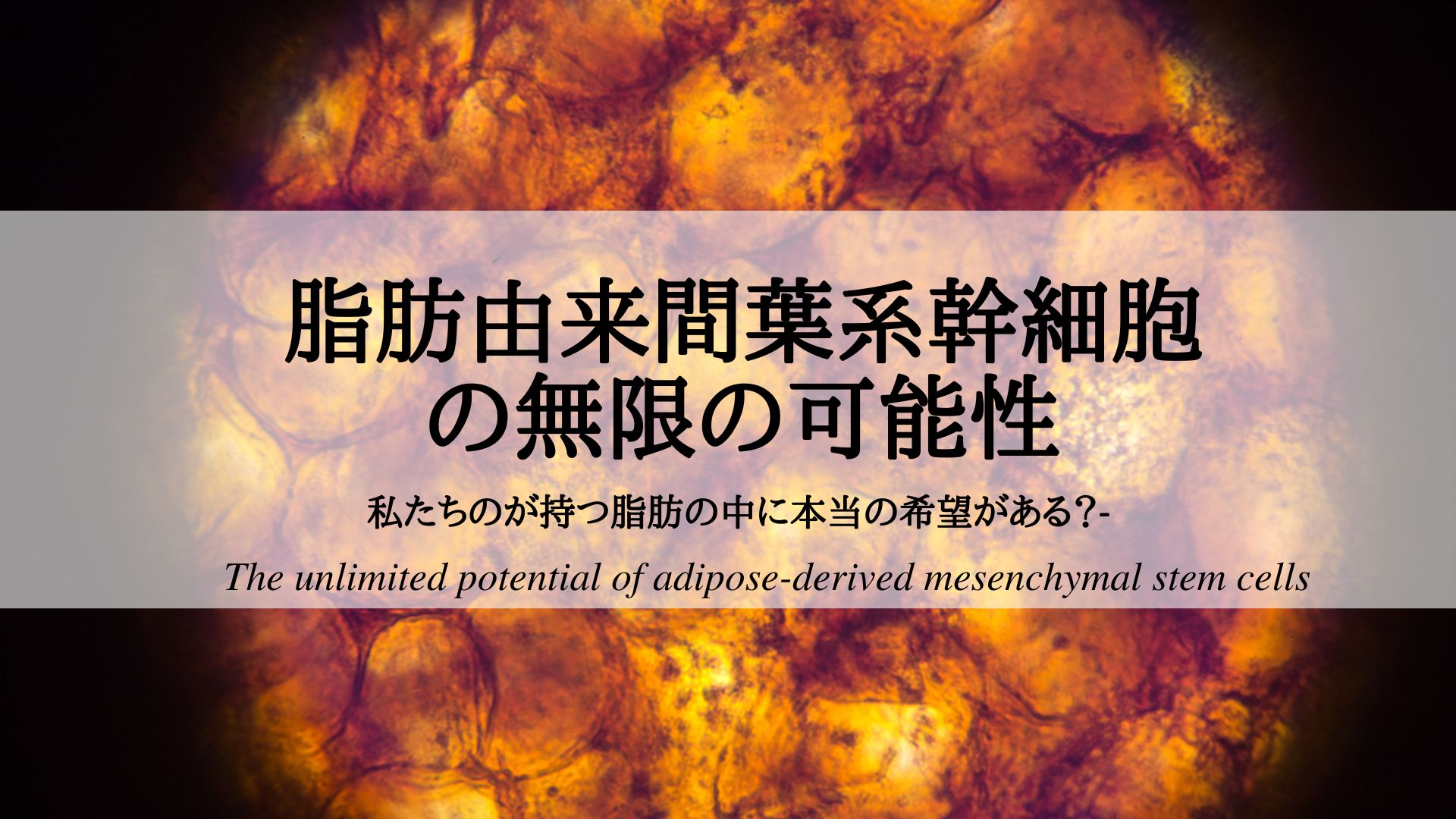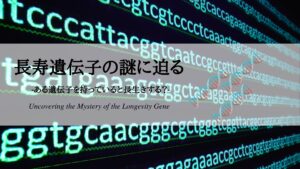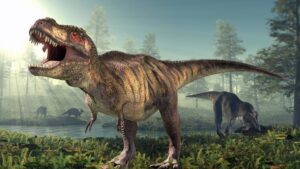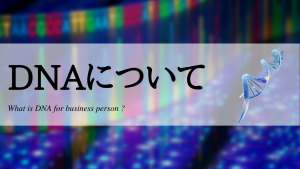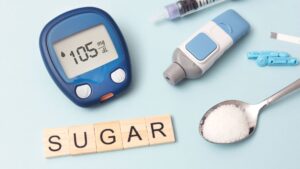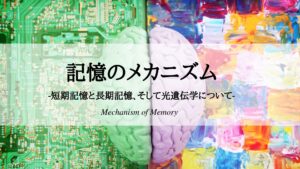私たちが普段は忌み嫌う脂肪が、実は再生医療の世界で注目されていることをご存じでしょうか?脂肪由来間葉系幹細胞(ADSCs)は簡単な脂肪吸引で得られ、骨や軟骨、さらには神経までも再生させる可能性を秘めています。再生医療や美容の現場で実用化が進みつつある、ADSCの無限の可能性を最新の研究動向とともに徹底解説します。
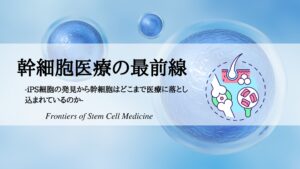
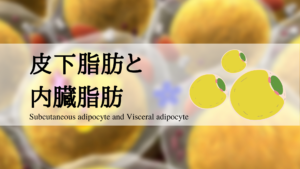
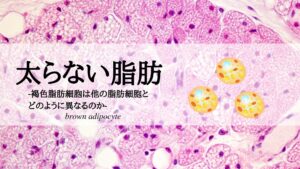
1. 基礎メカニズム
ADSCの生物学的特性
脂肪由来間葉系幹細胞(ADSCs)は、脂肪組織の間質血管成分から採取される成体幹細胞です。骨髄由来幹細胞(BM-MSC)と同様に間葉系幹細胞の一種であり、プラスチック培養面への接着性を持ち、CD90・CD105・CD73などの細胞表面マーカーを発現しつつ、CD45・CD34・HLA-DRなどは発現しないという基準で定義されます (Clinical Applications of Adipose-Derived Stem Cell (ADSC) Exosomes in Tissue Regeneration)。ADSCは体内に広く存在し、腹部皮下脂肪などから低侵襲的な脂肪吸引で容易に大量採取できる点で、骨髄幹細胞よりも利用しやすいとされています (Clinical Applications of Adipose-Derived Stem Cell (ADSC) Exosomes in Tissue Regeneration)。さらにADSCは高い自己増殖能を持ち、継代培養しても比較的遺伝的安定性を維持できるため、低コストで大量培養が可能です (Clinical Applications of Adipose-Derived Stem Cell (ADSC) Exosomes in Tissue Regeneration)。これらの特性により、ADSCは再生医療において非常に有望な細胞源とみなされています (Clinical Applications of Adipose-Derived Stem Cell (ADSC) Exosomes in Tissue Regeneration)。
(Current progress and limitations of research regarding the therapeutic use of adipose-derived stem cells: literature review | Journal of Umm Al-Qura University for Applied Sciences ) ADSCの多分化能とパラクライン作用の模式図。ADSCは脂肪、軟骨、骨、筋肉など中胚葉系組織の細胞に分化できるほか、条件次第では神経や肝細胞など外胚葉・内胚葉系の細胞への分化能も報告されています (Current progress and limitations of research regarding the therapeutic use of adipose-derived stem cells: literature review | Journal of Umm Al-Qura University for Applied Sciences )。一方、右側に示すようにADSCが分泌するエクソソームなどの細胞外小胞やサイトカイン(パラクライン作用)は、周囲の細胞に働きかけて血管新生の促進や炎症抑制などを引き起こし、組織再生を間接的に支えます (Current progress and limitations of research regarding the therapeutic use of adipose-derived stem cells: literature review | Journal of Umm Al-Qura University for Applied Sciences )。このようにADSCは分化能と分泌能の双方を通じて組織修復に寄与すると考えられています。 (Current progress and limitations of research regarding the therapeutic use of adipose-derived stem cells: literature review | Journal of Umm Al-Qura University for Applied Sciences )
分化能と増殖特性
ADSCは多分化能を有し、試験管内では脂肪細胞、軟骨細胞、骨細胞といったメソドーム系細胞への分化能が確認されています (Clinical Applications of Adipose-Derived Stem Cell (ADSC) Exosomes in Tissue Regeneration)。さらに一部の研究では、神経細胞や肝細胞など他胚葉系細胞への分化誘導にも成功したと報告されていますが、生体内で移植後に目的の細胞へ安定的に分化させることは依然として課題です (Current progress and limitations of research regarding the therapeutic use of adipose-derived stem cells: literature review | Journal of Umm Al-Qura University for Applied Sciences )。ADSCは未分化の状態で線維芽細胞様の形態を示し、高い増殖能を持つため比較的短期間で所要の細胞数を確保できます (Clinical Applications of Adipose-Derived Stem Cell (ADSC) Exosomes in Tissue Regeneration)。増殖因子やサイトカイン産生能にも優れ、低酸素環境などストレス下でも生存しやすいため、移植後も一定期間は生着して周囲に作用すると考えられています ( Therapeutic applications of adipose-derived stem cells in cardiovascular disease – PMC )。
幹細胞培養液(分泌因子)の特性
ADSCの培養上清には、ADSCが産生・分泌した多種多様な生理活性分子が含まれており、「分泌因子の集まり(=シークレトーム)」とも呼ばれます (Research progress and application prospect of adipose-derived stem cell secretome in diabetes foot ulcers healing | Stem Cell Research & Therapy | Full Text)。プロテオミクス解析によれば、ADSC培養液中には数百種類(500種類以上)のタンパク質が含まれており (Research progress and application prospect of adipose-derived stem cell secretome in diabetes foot ulcers healing | Stem Cell Research & Therapy | Full Text)、成長因子(VEGFやHGF、IGF-1、BMPなど)やサイトカイン、ケモカイン、酵素、さらに直径30–200nm程度のエクソソームを含む細胞外小胞が主要な構成要素です (Current progress and limitations of research regarding the therapeutic use of adipose-derived stem cells: literature review | Journal of Umm Al-Qura University for Applied Sciences )。これら分泌因子はパラクライン効果によって組織修復や炎症制御に寄与し、創傷治癒の促進など有益な作用を示すことが明らかになっています (Clinical Applications of Adipose-Derived Stem Cell (ADSC) Exosomes in Tissue Regeneration)。近年、このような幹細胞培養上清(ADSCのシークレトーム)を用いた**細胞を用いない再生医療(細胞フリー療法)**が注目されており、難治性の糖尿病性潰瘍などに対する効果を検証する研究が活発化しています (Research progress and application prospect of adipose-derived stem cell secretome in diabetes foot ulcers healing | Stem Cell Research & Therapy | Full Text)。
2. 疾患治療との関連
( Adipose-Derived Stem Cells: Current Applications and Future Directions in the Regeneration of Multiple Tissues – PMC ) *ADSCの主な治療応用の模式図 ( Adipose-Derived Stem Cells: Current Applications and Future Directions in the Regeneration of Multiple Tissues – PMC )。脂肪由来幹細胞は、図に示すように骨再生(骨欠損の補填)、軟骨修復(変形性関節症など)、神経系の再建(脊髄損傷・外傷性脳損傷など)、肝組織の再生(急性肝不全や肝硬変)、心筋の修復(心筋梗塞後の心機能回復)、**皮膚の再生(熱傷創面の治癒促進)といった幅広い領域での再生医療応用が模索されています。ADSCは目的とする組織へ分化して直接損傷を修復することに加え、サイトカインやエクソソームの放出による間接的な組織再生促進効果(パラクライン作用)*によって治療効果を発揮します (Current progress and limitations of research regarding the therapeutic use of adipose-derived stem cells: literature review | Journal of Umm Al-Qura University for Applied Sciences )。このような多機能性により、様々な疾患モデルでADSCの治療効果が検証されています。
変形性関節症への応用
膝関節の変形性関節症(膝OA)に対し、ADSCを関節腔内に注射する再生医療が試みられています。初期の臨床研究では、自家ADSCを用いた治療は安全に実施可能であり、膝痛の軽減や軟骨組織の修復が認められたとの報告があります (Frontiers | Intra-Articular Injection of Adipose-Derived Stem Cells Ameliorates Pain and Cartilage Anabolism/Catabolism in Osteoarthritis: Preclinical and Clinical Evidences)。ある研究では、培養ADSCの関節内投与によって軟骨の崩壊マーカーの減少およびII型コラーゲンの増加が確認され、患者の疼痛スコアと関節機能が改善しました (Frontiers | Intra-Articular Injection of Adipose-Derived Stem Cells Ameliorates Pain and Cartilage Anabolism/Catabolism in Osteoarthritis: Preclinical and Clinical Evidences) (Frontiers | Intra-Articular Injection of Adipose-Derived Stem Cells Ameliorates Pain and Cartilage Anabolism/Catabolism in Osteoarthritis: Preclinical and Clinical Evidences)。これらの結果は、ADSCが分泌する抗炎症サイトカインや成長因子によって関節内の炎症を抑え軟骨再生を促進したことが一因と考えられています。もっとも、臨床研究間で細胞調製法や投与プロトコルがまちまちで、有効性のバラツキも指摘されているため、今後さらなる大規模試験と手法の標準化が必要です (Adipose-derived stem cells and knee osteoarthritis: New perspectives, old concerns)。
心血管疾患への応用
心筋梗塞や心不全など心血管疾患に対してもADSC治療の研究が進められています。動物モデルでは、梗塞後の心筋にADSCを移植すると、一部が心筋細胞や血管内皮細胞へ分化し、さらに多数のパラクライン因子を放出して血管新生や抗炎症効果を発揮し、心機能の回復を促すことが示されています ( Therapeutic applications of adipose-derived stem cells in cardiovascular disease – PMC )。実際、ADSC移植により梗塞サイズの縮小や左室駆出率(LVEF)の改善が認められたとの報告もあります。臨床段階でも、世界各国で急性心筋梗塞に対するADSC投与の安全性・有効性を検討する研究が行われており、収縮機能の改善など有望な結果が報告されています ( Therapeutic applications of adipose-derived stem cells in cardiovascular disease – PMC )。例えばある臨床試験では、冠動脈を介してADSCを投与した患者群で左室機能の指標がプラセボ群より改善し、重篤な有害事象は認められませんでした。このようにADSCは心筋のリモデリング抑制や新生血管形成によって心臓組織の修復を促しうると期待されています。
神経疾患への応用
脊髄損傷や脳卒中、パーキンソン病など中枢神経系の疾患・損傷に対しても、ADSCを用いた治療研究が進められています。ADSCには神経細胞への分化能や神経栄養因子の分泌能があるため、損傷した神経組織の再生や機能回復をサポートできる可能性があります。実際、虚血性脳卒中モデルの動物にADSC由来エクソソームを投与した実験では、脳内の炎症性ミクログリア(M1型)の活性化が抑制され、梗塞による神経損傷が軽減されたとの報告があります (Current progress and limitations of research regarding the therapeutic use of adipose-derived stem cells: literature review | Journal of Umm Al-Qura University for Applied Sciences )。脊髄損傷モデルでもADSC移植により神経再生と運動機能の一部回復が見られた研究があり、ヒト臨床でも慢性脊髄損傷患者へのADSC注射の初期試験が試みられています。さらに、多発性硬化症や脊髄小脳変性症といった難治性神経疾患に対する治療応用も検討されており、ADSCの免疫調整作用(自己免疫の抑制)と神経保護作用に注目が集まっています (Current progress and limitations of research regarding the therapeutic use of adipose-derived stem cells: literature review | Journal of Umm Al-Qura University for Applied Sciences )。もっとも神経系への応用は臨床研究の症例数がまだ限られているため、今後安全性・有効性を確認する大規模試験が求められます。
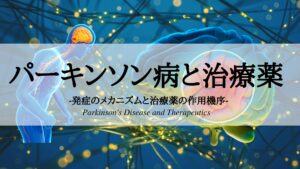
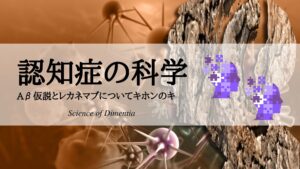
免疫調整機能と組織再生能力
ADSCは上記のような個別の疾患領域において、多面的な作用機序で治療効果を発揮します。その根底にあるのがADSCの免疫調整機能と組織再生促進能力です。ADSCは活性化した免疫細胞(T細胞やマクロファージなど)の働きを抑制し、炎症性サイトカイン(例えばTNF-αやIL-6)を減少させる一方、抗炎症サイトカイン(IL-10など)の産生を促進することが報告されています (Clinical Applications of Adipose-Derived Stem Cell (ADSC) Exosomes in Tissue Regeneration)。これにより慢性炎症や自己免疫による組織ダメージを軽減し、治癒環境を整えます。またADSCから放出される種々の増殖因子(FGF-2やVEGF-A、HGF、IGF-1、TGF-βなど)は、血管新生や細胞増殖を促して組織の再生・修復を後押しします (Current progress and limitations of research regarding the therapeutic use of adipose-derived stem cells: literature review | Journal of Umm Al-Qura University for Applied Sciences )。例えば心筋梗塞後の心臓や変形性関節症の関節では、ADSC由来因子が血管新生や抗炎症をもたらし組織のリモデリング改善に寄与していると考えられます。この免疫調整・再生促進作用はADSC療法の共通基盤であり、疾患を問わず重要な役割を果たしています。
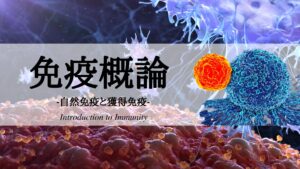
エクソソームを用いた治療応用
最近では、ADSCそのものを移植する代わりに、ADSCが分泌するエクソソーム(直径30–100nm程度の細胞外小胞)を利用した治療にも期待が高まっています。ADSC由来エクソソームは親細胞と類似の機能を持ち、内部に様々なマイクロRNAやタンパク質、脂質を搭載しており、標的細胞に取り込まれることでその遺伝子発現や振る舞いを変化させます (Current progress and limitations of research regarding the therapeutic use of adipose-derived stem cells: literature review | Journal of Umm Al-Qura University for Applied Sciences )。例えばADSC-エクソソームは損傷部位のマクロファージの表現型転換を誘導し、炎症環境を修復的な状態へシフトさせる働きがあります。その結果、先述の脳卒中モデルで示されたように炎症の抑制と組織保護が達成されうるのです (Current progress and limitations of research regarding the therapeutic use of adipose-derived stem cells: literature review | Journal of Umm Al-Qura University for Applied Sciences )。また、エクソソーム中の成長因子や遺伝子産物が軟骨細胞や心筋細胞の再生を促すシグナルを活性化することも報告されています (Clinical Applications of Adipose-Derived Stem Cell (ADSC) Exosomes in Tissue Regeneration)。エクソソーム療法は細胞を用いないため免疫拒絶や腫瘍形成のリスクが低減でき、保存・輸送もしやすいという利点があります。そのため現在、ADSCエクソソーム製剤の開発や臨床試験が進められており、次世代の再生医療として大きな注目を集めています (Clinical Applications of Adipose-Derived Stem Cell (ADSC) Exosomes in Tissue Regeneration)。
3. 最新の研究動向
幹細胞治療の臨床試験状況
脂肪由来幹細胞を用いた再生医療は近年世界的に研究が活発化しており、臨床試験の件数も増加傾向にあります。2010年代後半までに130件以上のADSC関連臨床試験が各国で実施されており、その適応は整形外科領域(軟骨・骨再生)、心血管疾患、神経疾患、皮膚潰瘍治療など多岐にわたります ( Therapeutic applications of adipose-derived stem cells in cardiovascular disease – PMC )。例えば欧州を中心に膝関節症や褥瘡、Crohn病瘻孔、肝硬変、脊髄損傷、心筋梗塞などを対象とした臨床研究が報告されてきました (Current progress and limitations of research regarding the therapeutic use of adipose-derived stem cells: literature review | Journal of Umm Al-Qura University for Applied Sciences )。これまでのところ深刻な有害事象は少なく、安全性は概ね良好とされる一方で、治療効果については試験によってばらつきがあり効果を示せない例も見受けられます (Current progress and limitations of research regarding the therapeutic use of adipose-derived stem cells: literature review | Journal of Umm Al-Qura University for Applied Sciences ) (Current progress and limitations of research regarding the therapeutic use of adipose-derived stem cells: literature review | Journal of Umm Al-Qura University for Applied Sciences )。現在も各国でADSC治療の第I相・II相試験が多数進行中であり、エビデンスの蓄積に伴い適応疾患の拡大や治療プロトコルの改善が期待されています。学術論文数や学会発表も年々増加しており、ADSC治療は再生医療の主要トピックの一つとなっています (Current progress and limitations of research regarding the therapeutic use of adipose-derived stem cells: literature review | Journal of Umm Al-Qura University for Applied Sciences )。

幹細胞培養液の応用と製品化
ADSCの培養上清(いわゆる幹細胞培養液)を治療に応用する試みも発展しています。細胞そのものではなく培養上清中の有効成分(サイトカインやエクソソーム)を利用することで、安全性や保存性の向上が期待できるためです (Clinical Applications of Adipose-Derived Stem Cell (ADSC) Exosomes in Tissue Regeneration)。実際、ADSC培養上清を創傷部位に塗布または注入して治癒を促す研究や、エクソソームを含む上清を点滴投与して炎症疾患を治療する臨床研究が報告され始めています (Research progress and application prospect of adipose-derived stem cell secretome in diabetes foot ulcers healing | Stem Cell Research & Therapy | Full Text)。また再生医療分野以外でも、ADSC培養上清に含まれる成長因子を活かした美容・皮膚再生製品の開発が盛んです。例えば韓国ではADSC培養液を配合した機能性化粧品が上市されており、臨床試験において肌の保湿やシワ改善効果が確認されています (A study on clinical effectiveness of cosmetics containing human stem cell conditioned media | Biomedical Dermatology | Full Text)。日本国内でも、ヒト幹細胞培養液配合の化粧品や育毛剤が市販されるなど、ADSC由来成分を利用したビジネス展開が注目されています。さらにADSCエクソソームを医薬品や美容液として大量生産・製品化する研究開発も進んでおり、将来的な産業化が期待されています。
国際的なADSC研究の進展
世界的にみると、脂肪由来幹細胞を用いた再生医療は研究から実用化へ着実にステップを進めています。特に欧州では先駆的な成果があり、2018年に脂肪由来MSC製剤「ダルバストロセル(商品名アロフィセル)」が欧州医薬品庁(EMA)から承認を取得しました ( Adipose-Derived Stem Cells in the Treatment of Perianal Fistulas in Crohn’s Disease: Rationale, Clinical Results and Perspectives – PMC )。アロフィセルは健常ドナーの脂肪組織から調製した間葉系幹細胞(eASCs)を有効成分とする医薬品で、クローン病に伴う難治性肛門瘻に対する治療薬として承認された世界初の製品です ( Adipose-Derived Stem Cells in the Treatment of Perianal Fistulas in Crohn’s Disease: Rationale, Clinical Results and Perspectives – PMC )。この成功例はADSC療法の有効性と商業生産の可能性を示すものであり、他の疾患領域にも応用を広げる研究が進んでいます。米国でもFDA公認の大規模治験が進行中で、欧米を中心に産学官のコンソーシアムによる幹細胞治療研究が活発化しています。日本発の研究としては、京都大学や産業技術総合研究所がADSCを含む細胞シートによる心筋再生や軟骨再建の臨床研究を行うなど、国際競争力のある成果も現れ始めています。また、日本は2014年施行の再生医療新法の下で条件付き早期承認制度を整備しており、国内企業によるADSCを用いた医療製品の開発も進行中です。国際的な学術交流も盛んで、ADSCに関する国際会議や共同研究プロジェクトを通じて知見の集積が加速しています (Current progress and limitations of research regarding the therapeutic use of adipose-derived stem cells: literature review | Journal of Umm Al-Qura University for Applied Sciences )。
4. 倫理的・社会的視点
未承認治療と規制の問題
再生医療の隆盛に伴い、科学的根拠が十分ではない未承認の幹細胞治療が民間クリニックで提供されるケースも国際的に問題視されています。実際、日本では2010年に京都のクリニックで自家脂肪由来幹細胞を点滴投与された患者が肺動脈塞栓症を起こし死亡する事故が発生しました (iPS細胞とELSI問題について)。当時、日本ではこのような自由診療による幹細胞治療に明確な規制がなく、韓国など他国で許可が下りない治療を日本で行う動きも指摘されていました (iPS細胞とELSI問題について)。この痛ましい事例を契機に、国内では2014年に「再生医療等安全性確保法(ASRM法)」が制定され、幹細胞治療の提供にはリスクに応じた厚労省への届け出・審査が義務付けられました。現在では無届けで幹細胞治療を行った医師が逮捕・起訴される例も出ており (Current status of cell-based interventions in Japan: Cell Stem Cell)、法の下で一定の監視・抑制が働いています。それでもなお国内外で規制の網をかいくぐったクリニックが存在することが報告されており ( Stem Cell Therapy, the Market, the Opportunities and the Threat – PMC )、患者の安全と治療の有効性を確保するためには引き続き厳格な規制と国民への啓発が必要です。
ADSC市場規模とビジネス動向
再生医療分野は学術研究のみならず新産業としても期待されており、ADSC関連市場も今後大きな成長が予想されています。ある分析では、世界の幹細胞治療市場規模は2022年時点で約2億9700万ドルと推定され、2022年から2027年にかけて年平均16.8%のペースで拡大すると予測されています ( Stem Cell Therapy, the Market, the Opportunities and the Threat – PMC )。臨床試験での有望な結果や、政府・民間からの研究開発資金の増加、再生医療に対する需要の高まりが市場成長の原動力になるとされています ( Stem Cell Therapy, the Market, the Opportunities and the Threat – PMC )。一方で、市場の拡大に伴い倫理的課題や規制上のハードルも指摘されています。幹細胞治療は製造コストが高額になりがちであること、患者への費用負担が大きいこと、治療ごとの品質・効果のばらつき、そして上述した未承認療法の横行による信頼性低下などが課題です ( Stem Cell Therapy, the Market, the Opportunities and the Threat – PMC )。特にエビデンスの乏しい治療が乱立する状況に対しては各国の規制当局が注意を払っており ( Stem Cell Therapy, the Market, the Opportunities and the Threat – PMC )、健全な市場形成のためにも明確なガイドラインと監督が求められています。
国内のビジネス動向としては、再生医療安全性確保法のもとでリスク区分II・IIIに該当する自家細胞治療が届け出ベースで認められていることから、民間クリニックによるADSC療法の提供が増加しています (Current status of cell-based interventions in Japan: Cell Stem Cell)。厚生労働省への届出情報によれば、自己脂肪幹細胞を用いた関節疾患や美容目的の治療プログラムを実施している医療機関が全国に多数存在します。これらは公的保険適用外の自由診療であり高額な費用がかかるものの、高齢化社会における需要に応じて市場が拡大している分野です。製薬企業やベンチャー企業もADSCを用いた治療製品の開発に乗り出しており、産学連携での臨床研究やベンチャーへの投資も活発化しています。日本国内市場は欧米に比べ規模は小さいものの、法整備の進展も追い風となり今後成長が見込まれます。総じて、ADSCを含む再生医療ビジネスはグローバル規模で発展途上にあり、適切な規制のもと安全かつ効果的な治療を実現しつつ持続的な産業成長を図ることが社会的課題となっています。
参考文献(一部抜粋):
- Busser et al., Isolation of Adipose-Derived Stromal Cells Without Enzymatic Treatment, STEM CELLS DEV, 2014 (ADSC differentiation into osteoblasts, adipocytes, and chondroblasts…. | Download Scientific Diagram) (ADSC differentiation into osteoblasts, adipocytes, and chondroblasts…. | Download Scientific Diagram).
- Papadopoulos et al., Clinical Applications of Adipose-Derived Stem Cell (ADSC) Exosomes in Tissue Regeneration, IJMS, 2022 (Clinical Applications of Adipose-Derived Stem Cell (ADSC) Exosomes in Tissue Regeneration) (Clinical Applications of Adipose-Derived Stem Cell (ADSC) Exosomes in Tissue Regeneration).
- Skrypnyk, Current progress and limitations of research regarding the therapeutic use of ADSCs: literature review, 2025 (Current progress and limitations of research regarding the therapeutic use of adipose-derived stem cells: literature review | Journal of Umm Al-Qura University for Applied Sciences ) (Current progress and limitations of research regarding the therapeutic use of adipose-derived stem cells: literature review | Journal of Umm Al-Qura University for Applied Sciences ).
- Yan et al., ADSCs ameliorate osteoarthritis: Preclinical and Clinical evidence, Front. Pharmacol., 2022 (Frontiers | Intra-Articular Injection of Adipose-Derived Stem Cells Ameliorates Pain and Cartilage Anabolism/Catabolism in Osteoarthritis: Preclinical and Clinical Evidences).
- Frese et al., Adipose tissue-derived stem cells in regenerative medicine, Transfus Med Hemother, 2016 ( Therapeutic applications of adipose-derived stem cells in cardiovascular disease – PMC ) ( Therapeutic applications of adipose-derived stem cells in cardiovascular disease – PMC ).
- Buscail et al., Adipose-Derived Stem Cells in perianal fistulas (Crohn’s disease), IJMS, 2021 ( Adipose-Derived Stem Cells in the Treatment of Perianal Fistulas in Crohn’s Disease: Rationale, Clinical Results and Perspectives – PMC ).

